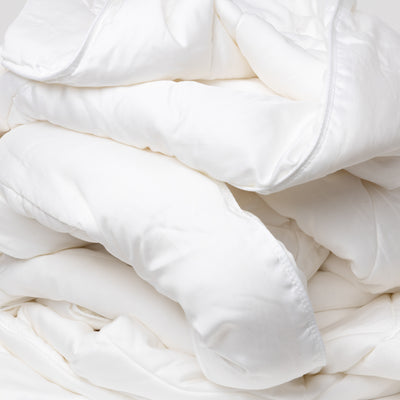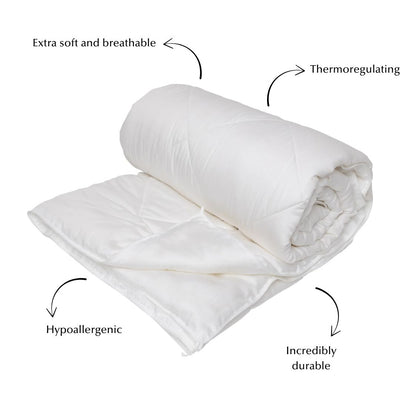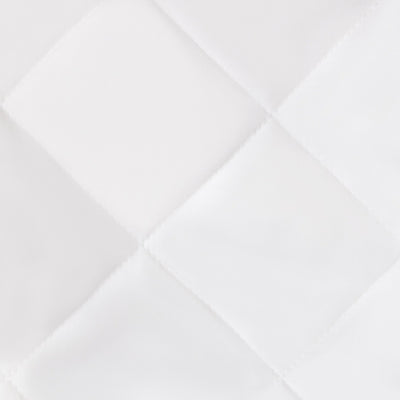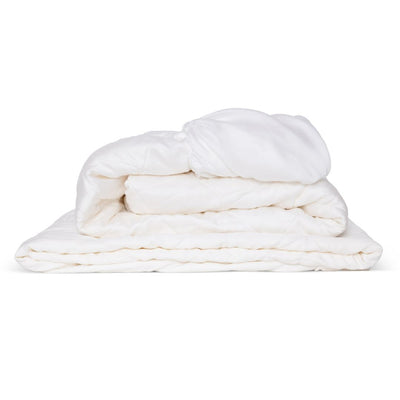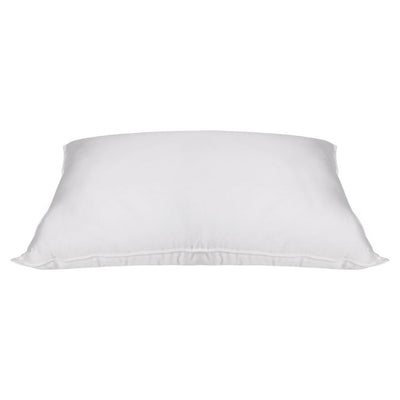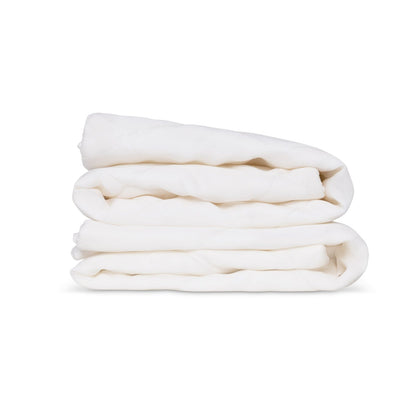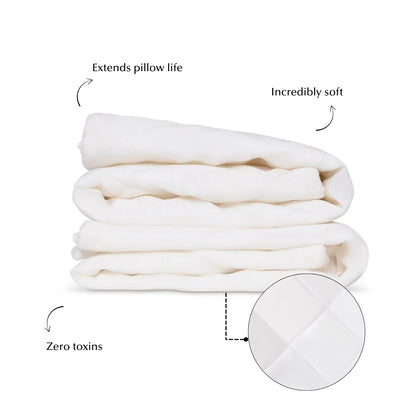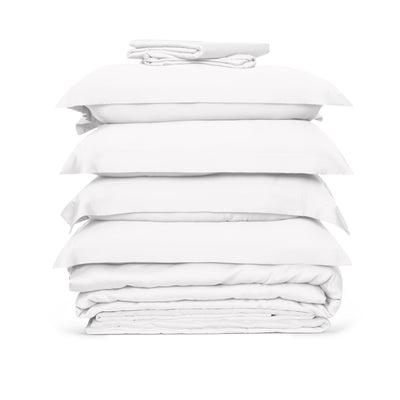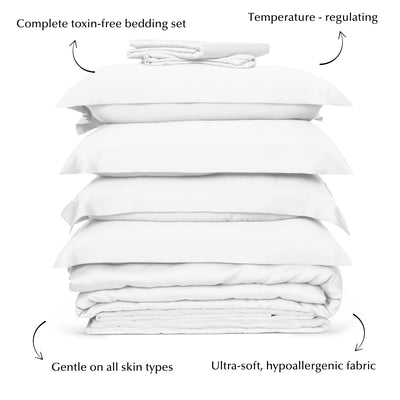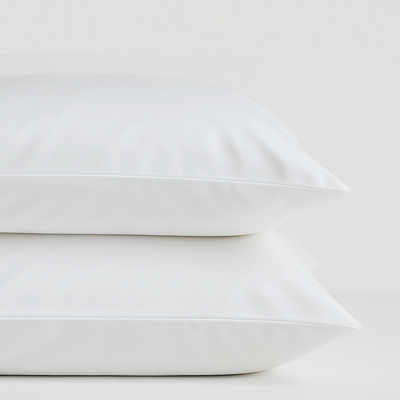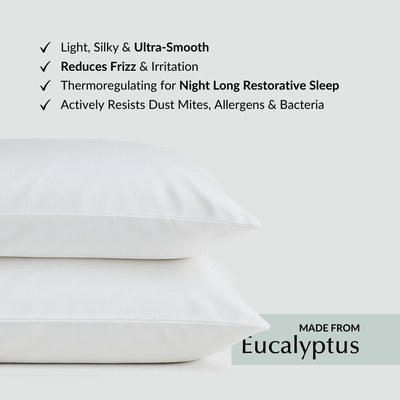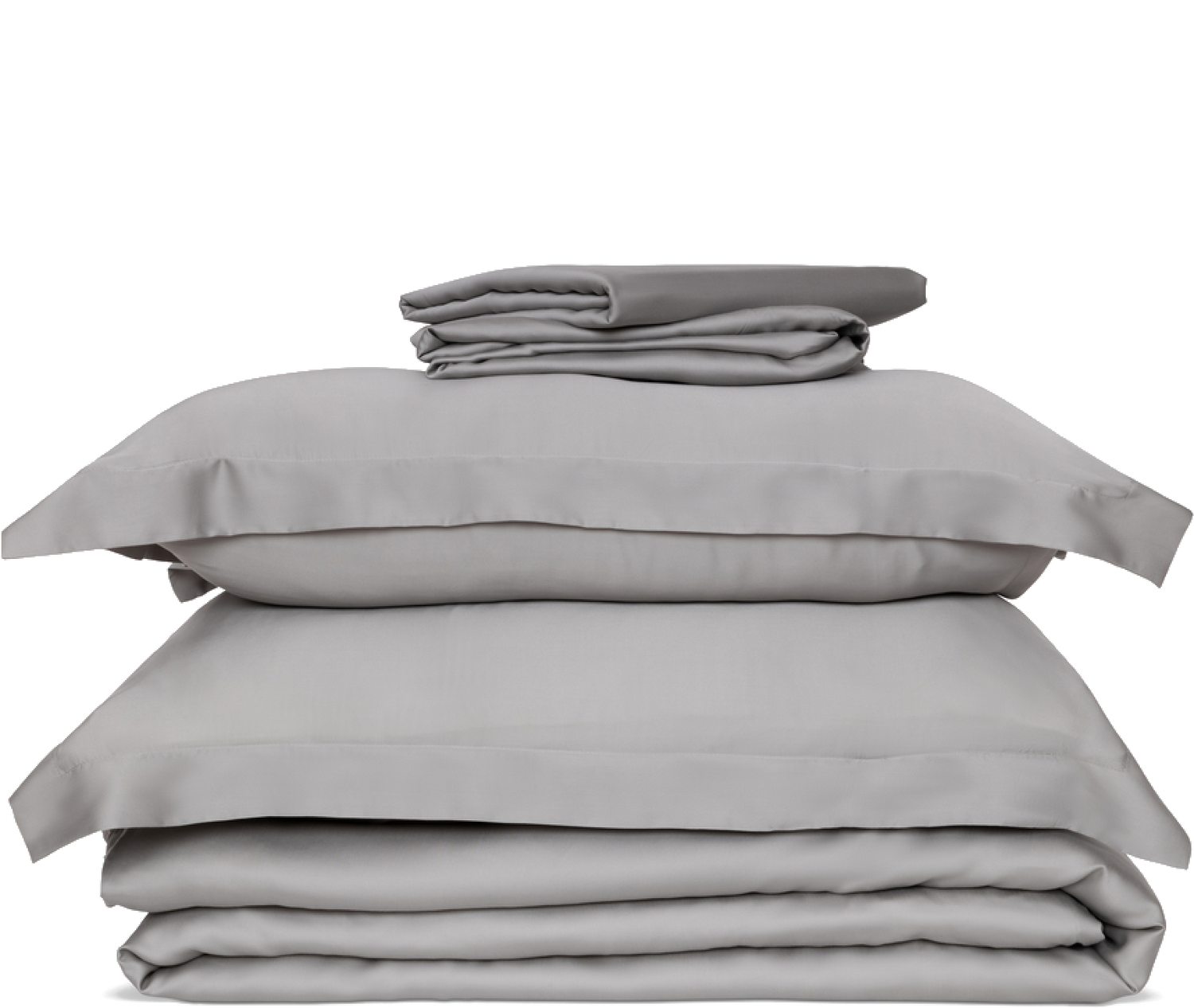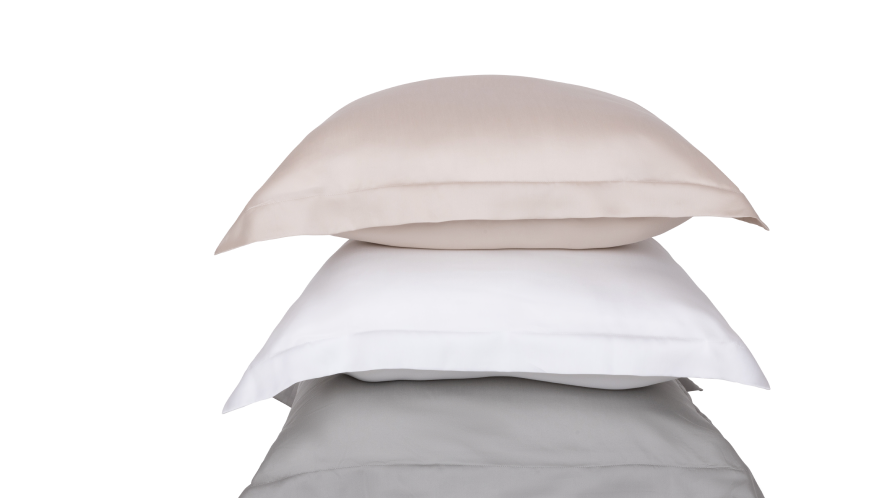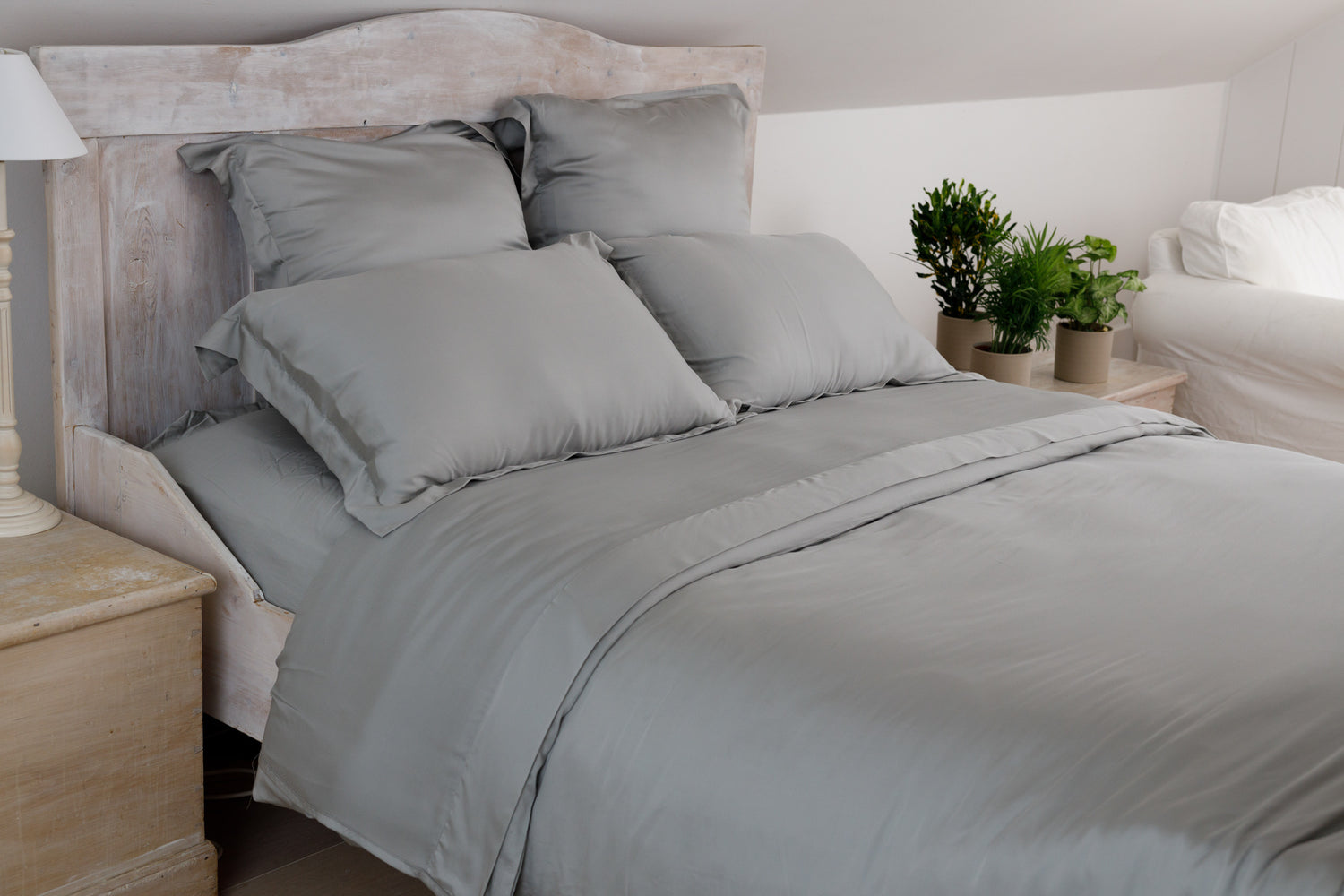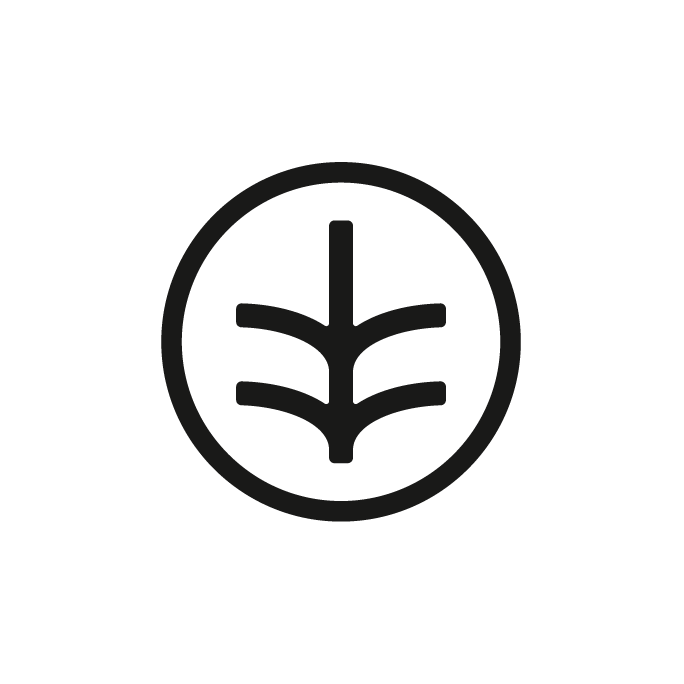One of the oldest known textiles and widely considered to be among the most luxurious of fibres, silk is a natural material with a rich history of producing soft and elegant bedding and fashion.
But what is the difference between organic silk and ‘normal silk’ – and, with a number of welfare and environmental concerns around the manufacturing of natural silk, is there a suitable, more sustainable silk alternative?
‘Normal’ silk vs organic silk
Whether you regularly buy silk bedding and clothing or just looking for your next set, it’s important to know the difference between conventional and organic silk.
What is conventional silk?

There are a number of different species of silkworm, however, the type that’s typically used in silk manufacturing is the ‘bombyx mori’ - commonly known as the mulberry silkworm thanks to its diet of mulberry leaves.
The mulberry silkworm is the caterpillar of the domesticated silk moth, and silk is collected during chrysalis. What you may not realise, though, is how the silk is collected.
Once a silkworm begins to outgrow its caterpillar state, it begins to spin a cocoon, which it then encloses itself in ready to emerge as a fully grown moth. However, the silk industry capitalises at this point, collecting cocoons and placing them in vats of boiling water. With the caterpillars boiled away, the silk is then carefully extracted and woven into high-quality, luxury fabric.
What is organic silk?

The production of organic silk is much the same as ‘normal’ silk, with silkworm cocoons collected and boiled before careful extraction. However, the key differences is that the mulberry leaves that the silkworms enjoy are grown organically, free of chemicals, pesticides, insecticides, or genetic sprays.
While the process may only be slightly different, there are a few key benefits to producing silk organically:
- Cocoons can grow larger, which can result in a greater yield.
- The quality of the resulting silk is significantly improved.
- Water pollution is significantly reduced.
However, the catch is that this process is lengthier, which naturally reduces the amount of fabric that’s manufactured each year.
What is vegan silk?
Vegan silk, also commonly referred to as peace silk, is produced in much the same way as regular and organic silk. Up until a point, at least.
The fundamental difference is that peace silk is produced with welfare in mind: instead of boiling silkworms alive to extract the silk, the caterpillar is permitted to completely transform into its butterfly or moth form and emerge from the cocoon to enjoy its new life.
Of course, this particular method of silk production can be quite slow, as you’re waiting on complete metamorphosis before you can complete the extraction, but the resulting silk is completely cruelty-free and organic.
The key hurdle that prevents this type of silk production from becoming the leading process, though, is that the emergence results in damaged silk fibres. Rather than long, unbroken strands of silk, the broken fibres are carefully spun together to form an equally-luxurious material, albeit with a slightly rawer appearance than conventional silk.
What is eucalyptus silk?

Finally, a cruelty-free, environmentally-friendly, and sustainable alternative to natural silk is eucalyptus silk. Rather than being extracted from animals, eucalyptus silk is collected from the fast-growing and renewable eucalyptus tree. That’s right, no silkworms are involved in the manufacturing of eucalyptus silk!
The eucalyptus trees are grown across biodiverse forests, before being harvested and manufactured into fine fibre strands that offer the appearance of luxury silk. The fibres are then spun into yarn that is used to create soft and elegant bedding.
|
|
Normal silk |
Organic silk |
Peace silk |
Eucalyptus silk |
|
Organic |
No |
Yes |
Yes |
Yes |
|
Silkworm chrysalis |
Killed |
Killed |
Completes its lifecycle |
No silkworms are involved in producing eucalyptus silk |
|
Cruelty-free |
No |
No |
Yes |
Yes |
|
Environmental impact |
Mixed, uses pesticides |
Mixed |
Mixed |
Completely sustainable |
|
Ethical |
No |
No |
Yes |
Yes |
|
Product feel |
Soft and luxurious |
Soft and luxurious |
Soft and luxurious, with a rawer appearance |
Soft and luxurious |
Why choose eucalyptus silk bedding?

When considering luxury fabrics, there are a number of reasons to place eucalyptus silk at the top of your list:
- Softness: the softness of eucalyptus silk rivals Egyptian cotton and traditional, natural silk, making it the ideal material for bed sheets, pillowcases, and duvet covers.
- Breathability: the highly-breathable fibres used to produce eucalyptus silk bedding ensure you’re comfortable and cool all night long, whether it’s the height of summer or the depths of winter.
- Moisture-wicking: effective moisture management ensures you can enjoy a dryer, fresher sleeping environment, which improves overall comfort.
- Sustainability: ‘is silk sustainable’ is a common question posed by Brits, to which the short answer is yes, at least compared to cotton. However, when it comes to sustainability, we recommend you skip over natural silk and consider eucalyptus silk instead. It’s wholly sustainable, with trees grown on non-farmable land and quickly replenished.
In addition to the above benefits, eucalyptus silk production also impressively requires 95% less water and 30% less energy than cotton, making it a popular fabric among the environmentally-conscious.
Whether you’re upgrading your bedding or considering your options, hopefully you’re in a position to make an informed decision about silk. For even more insight like this from our sleep experts, head on over to the Ethical Bedding blog.

